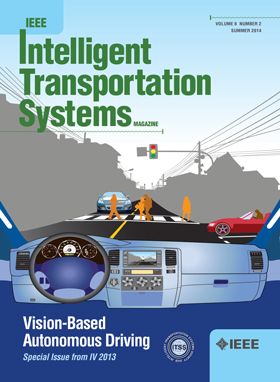基于异构图卷积的地铁系统短期外径流量完成与预测方法
IF 7.9
1区 工程技术
Q1 ENGINEERING, CIVIL
IEEE Transactions on Intelligent Transportation Systems
Pub Date : 2024-10-07
DOI:10.1109/TITS.2024.3467094
引用次数: 0
摘要
短期 OD 流量(即往返于车站之间的乘客数量)预测对于地铁系统的交通管理至关重要。最新完整 OD 流量收集的延迟效应和高维度 OD 流量的复杂时空相关性使得预测短期 OD 流量成为难题。由于没有充分利用实时乘客流动数据,也没有充分模拟车站间流动模式的隐性关联,现有方法亟待改进。本文提出了一种基于 Completion 的自适应异构图卷积时空预测器。其新颖性主要体现在两个方面。一是通过建立观测到的 OD 流量与高维预测目标 OD 流量之间的隐含相关性来模拟实时流动性演化,这种隐含相关性基于一个关键的数据驱动洞察:从一个车站出发的乘客的目的地分布与其他具有相似属性(如地理位置、区域功能)的车站相关。其次,通过考虑实时流动性演变和车站间的时间成本,估算未完成行程的目的地分布,从而完成最新的未完成 OD 流量,这是时间序列预测的基础,可以提高模型的动态适应性。在两个真实地铁数据集上的广泛实验证明了我们的模型优于其他竞争对手,模型性能的最大提升接近 4%。此外,我们提出的数据完整框架可以集成到其他模型中,使其性能提高达 2.1%。本文章由计算机程序翻译,如有差异,请以英文原文为准。
A Heterogeneous Graph Convolution Based Method for Short-Term OD Flow Completion and Prediction in a Metro System
Short-term OD flow (i.e. the number of passenger traveling between stations) prediction is crucial to traffic management in metro systems. The delayed effect in latest complete OD flow collection and complex spatiotemporal correlations of OD flows in high dimension make it challengeable to predict short-term OD flow. Existing methods need to be improved due to not fully utilizing the real-time passenger mobility data and not sufficiently modeling the implicit correlation of the mobility patterns between stations. In this paper, we propose a Completion based Adaptive Heterogeneous Graph Convolution Spatiotemporal Predictor. The novelty is mainly reflected in two aspects. The first is to model real-time mobility evolution by establishing the implicit correlation between observed OD flows and the prediction target OD flows in high dimension based on a key data-driven insight: the destination distributions of the passengers departing from a station are correlated with other stations sharing similar attributes (e.g. geographical location, region function). The second is to complete the latest incomplete OD flows by estimating the destination distribution of unfinished trips through considering the real-time mobility evolution and the time cost between stations, which is the base of time series prediction and can improve the model’s dynamic adaptability. Extensive experiments on two real world metro datasets demonstrate the superiority of our model over other competitors with the biggest model performance improvement being nearly 4%. In addition, the data complete framework we propose can be integrated into other models to improve their performance up to 2.1%.
求助全文
通过发布文献求助,成功后即可免费获取论文全文。
去求助
来源期刊

IEEE Transactions on Intelligent Transportation Systems
工程技术-工程:电子与电气
CiteScore
14.80
自引率
12.90%
发文量
1872
审稿时长
7.5 months
期刊介绍:
The theoretical, experimental and operational aspects of electrical and electronics engineering and information technologies as applied to Intelligent Transportation Systems (ITS). Intelligent Transportation Systems are defined as those systems utilizing synergistic technologies and systems engineering concepts to develop and improve transportation systems of all kinds. The scope of this interdisciplinary activity includes the promotion, consolidation and coordination of ITS technical activities among IEEE entities, and providing a focus for cooperative activities, both internally and externally.
 求助内容:
求助内容: 应助结果提醒方式:
应助结果提醒方式:


